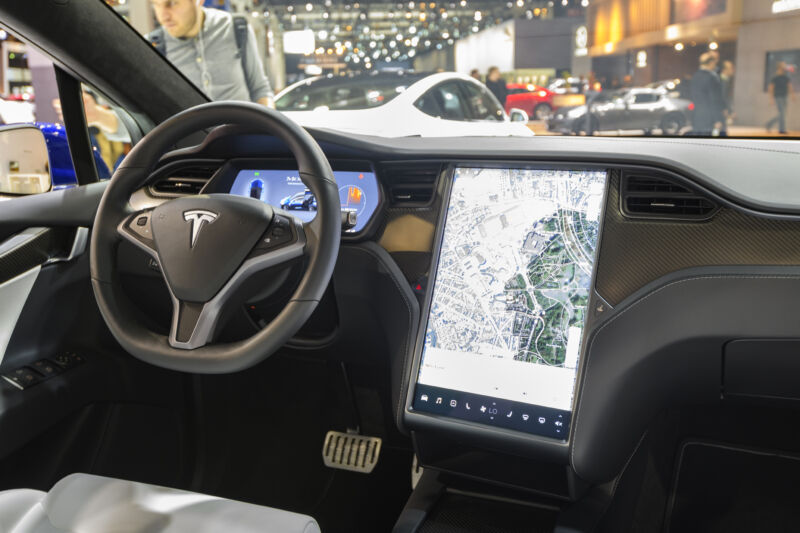
Tesla has released a new version of its Autopilot software that adds the ability to read speed limit signs, improving the accuracy of the speed limits displayed on the dashboard. The new version of the software also recognizes when a stoplight turns green. The car will notify the driver but won't start moving on its own.
Tesla first added the ability to spot stoplights and stop signs back in April. The initial version of the stoplight feature would slow down for a stoplight whether it was red or green. The driver had to signal the car to proceed through the intersection if the light was green—otherwise, the car would stop.
The first version of Autopilot, which was based on technology from Mobileye, included the ability to recognize speed limit signs. But Tesla split with Mobileye in 2016 and began building more of its Autopilot technology in-house. As a result, prior to the latest software update, newer Tesla vehicles displayed speed limits based on a GPS-based database of roadway speed limits.
Full self-driving software is progressing slower than Elon Musk expected
In April 2019, Tesla CEO Elon Musk predicted that Tesla's self-driving software would be "feature complete" by the end of 2019. He predicted that the software would take another six months to become reliable enough that drivers would no longer need to keep their hands on the wheel.
By the end of 2020, Musk predicted, the company's self-driving technology would be so good that customers could send their Teslas out to operate as self-driving taxis when they weren't being used, generating extra income in the process.
We said at the time that this timeline was unrealistic, and the events of the last year have confirmed that. Tesla's current self-driving software isn't close to being "feature complete;" Teslas don't turn autonomously at intersections, for example. It's not clear that Tesla's software will even reach this milestone by the end of 2020.
More importantly, even after the software can handle most situations under human supervision, it's likely to take a lot more than six months to achieve a level of reliability sufficient to dispense with a human safety driver. For comparison, Google's self-driving project, now called Waymo, achieved "feature complete" status in limited geographic areas around 2015. Yet today the company operates fully driverless vehicles only on selected routes. It still makes heavy use of safety drivers for other routes.
Tesla is tackling a more difficult technical problem than Waymo. Its self-driving software needs to operate everywhere, not just in geofenced areas. And Tesla is trying to develop self-driving capabilities without lidar sensors, which most companies view as essential to their self-driving stacks.
But Elon Musk continues to be optimistic about Tesla's efforts. Earlier this month, Musk tweeted that Tesla was preparing to release a "fundamental architectural rewrite" of the full self-driving software that "will come as a quantum leap" and not an incremental tweak.
Musk added that there he was "almost at zero interventions between home and work" with the latest development versions of the software. While he seemed to view that as an impressive accomplishment, it's also an admission of how far Tesla still has to go. A system that regularly requires intervention during a typical commute to work is far from the level required for fully driverless operation.
Read Again https://arstechnica.com/cars/2020/08/teslas-slow-self-driving-progress-continues-with-green-light-warning/Bagikan Berita Ini














0 Response to "Tesla’s slow self-driving progress continues with green light warning - Ars Technica"
Post a Comment